Watch a bison headbutts a car in Yellowstone National Park. The video is a stark reminder of the importance of not disturbing wildlife in their natural habitat.
A Close Encounter
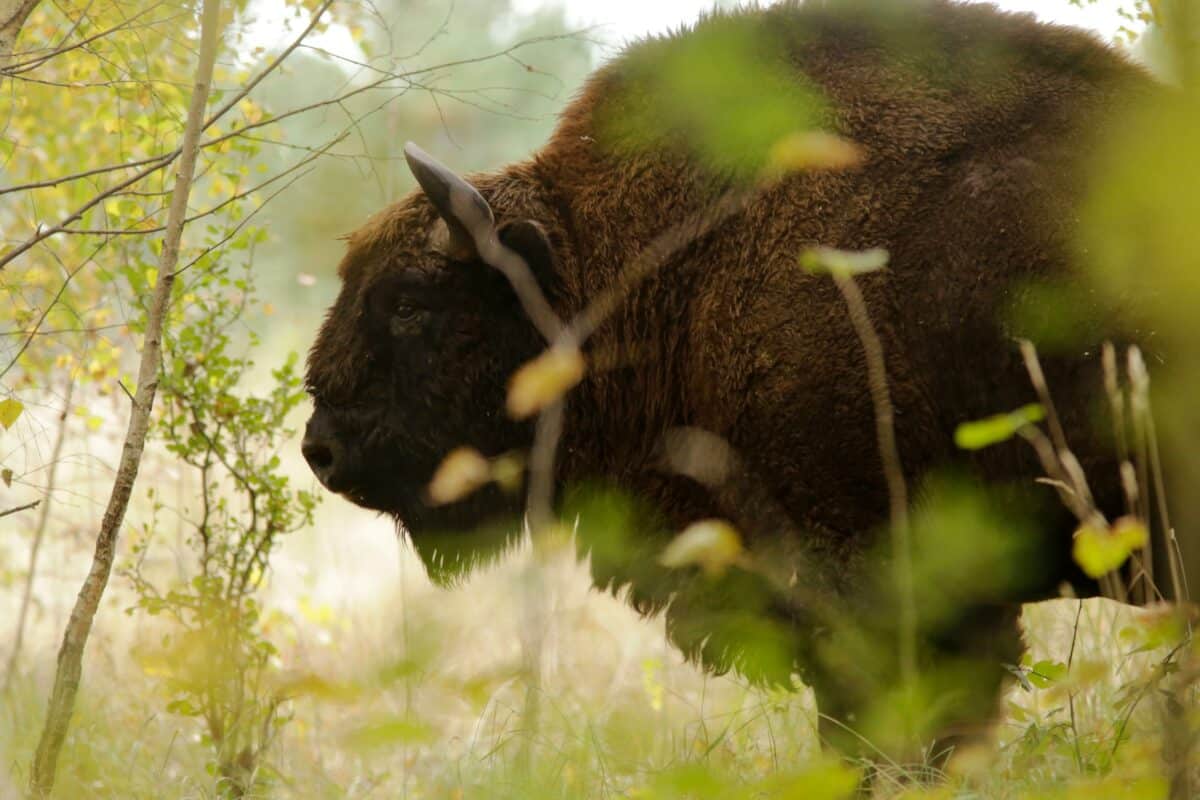
The video shows a bison approaching a car on a road in Yellowstone National Park. Despite the vehicle’s presence, the bison proceeds to headbutt the car, causing visible damage. The incident highlights the strength and power of these magnificent creatures and underscores the importance of maintaining a safe distance from wildlife.
The Importance of Not Disturbing Wildlife
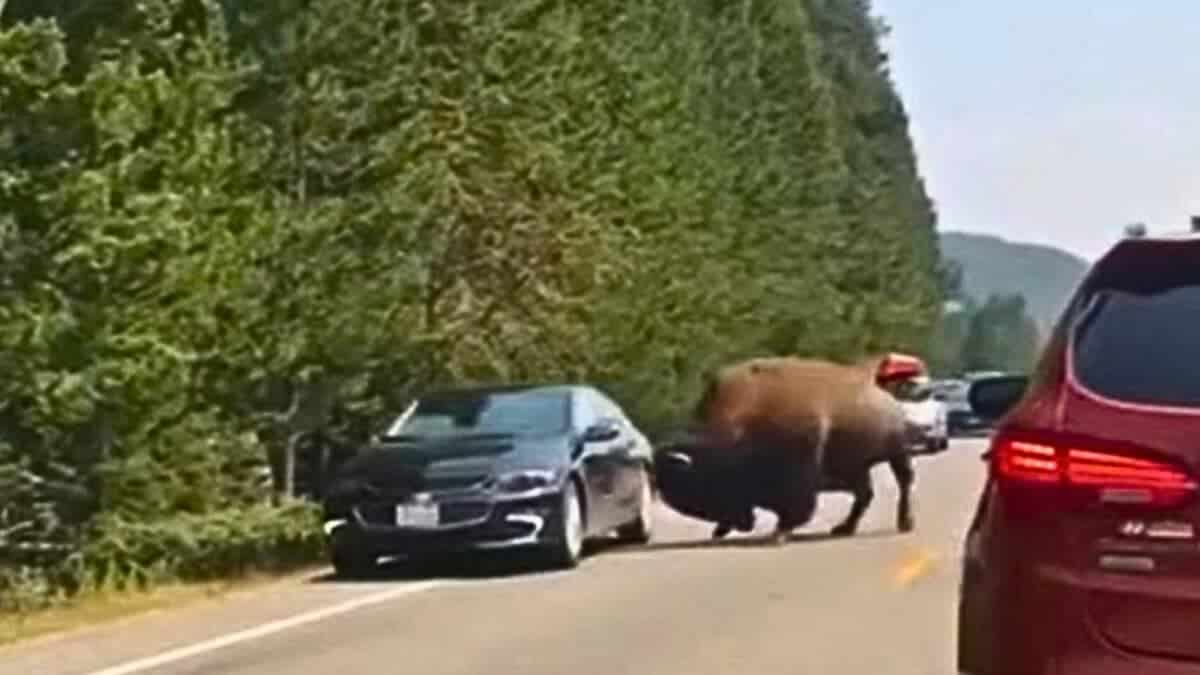
Wild animals, including bison, are unpredictable and can be dangerous. It is important to remember that national parks are their home, and we are just visitors. It is our responsibility to respect their space and not disturb them.
Here are some crucial guidelines to follow when visiting a national park or any other natural habitat:
- Maintain a Safe Distance: Always keep a safe distance from wildlife. The National Park Service recommends staying a minimum of 25 yards away from large animals like bison and elk and a minimum of 100 yards away from predators like wolves and bears.
- Avoid Feeding the Animals: Feeding wildlife is not only dangerous for humans, but it is also harmful to the animals. It can lead to poor nutrition, disease, and habituation of human food.
- Stay on Designated Trails: Venturing off designated trails can disturb wildlife and damage their habitat. It can also increase the risk of an encounter with a dangerous animal.
- Do Not Honk or Make Loud Noises: Loud noises can startle animals and cause them to act aggressively.
- Respect Wildlife Closures: Areas may be temporarily closed to protect wildlife during sensitive times such as mating, nesting, or calving. It is essential to respect these closures for the well-being of the animals.
The Video
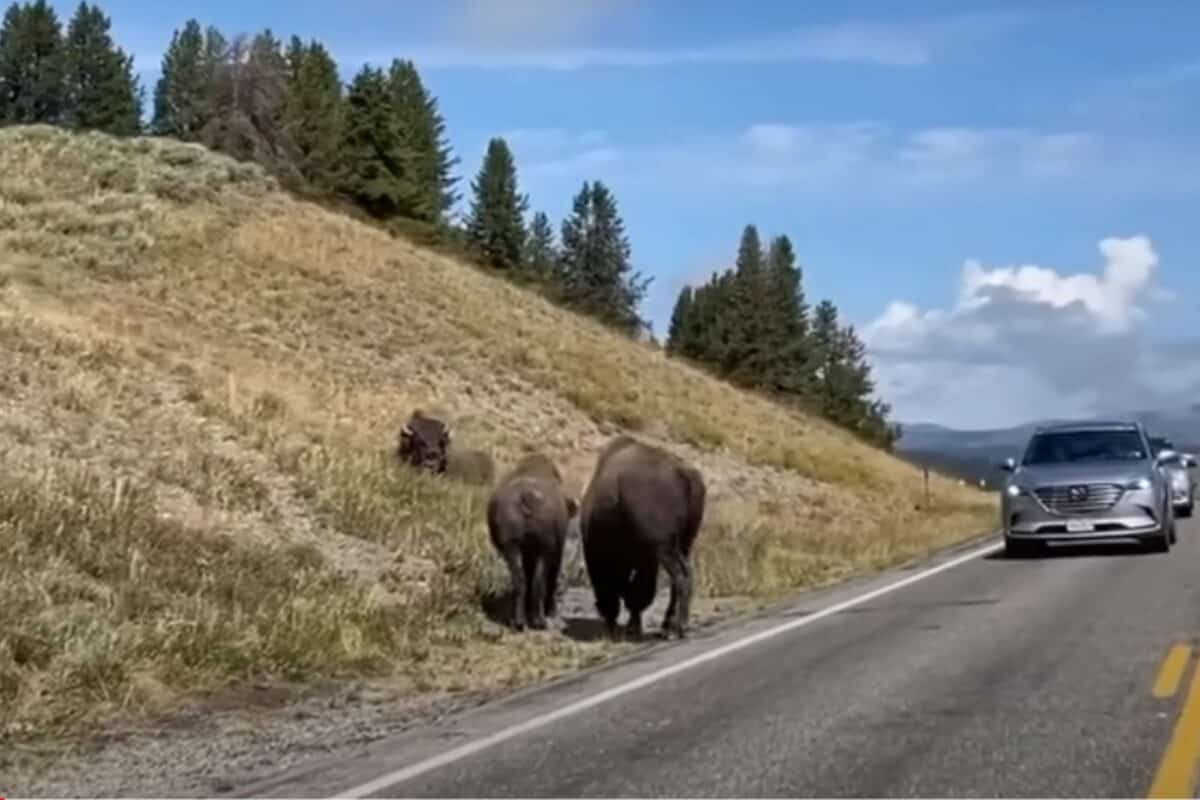
Conclusion
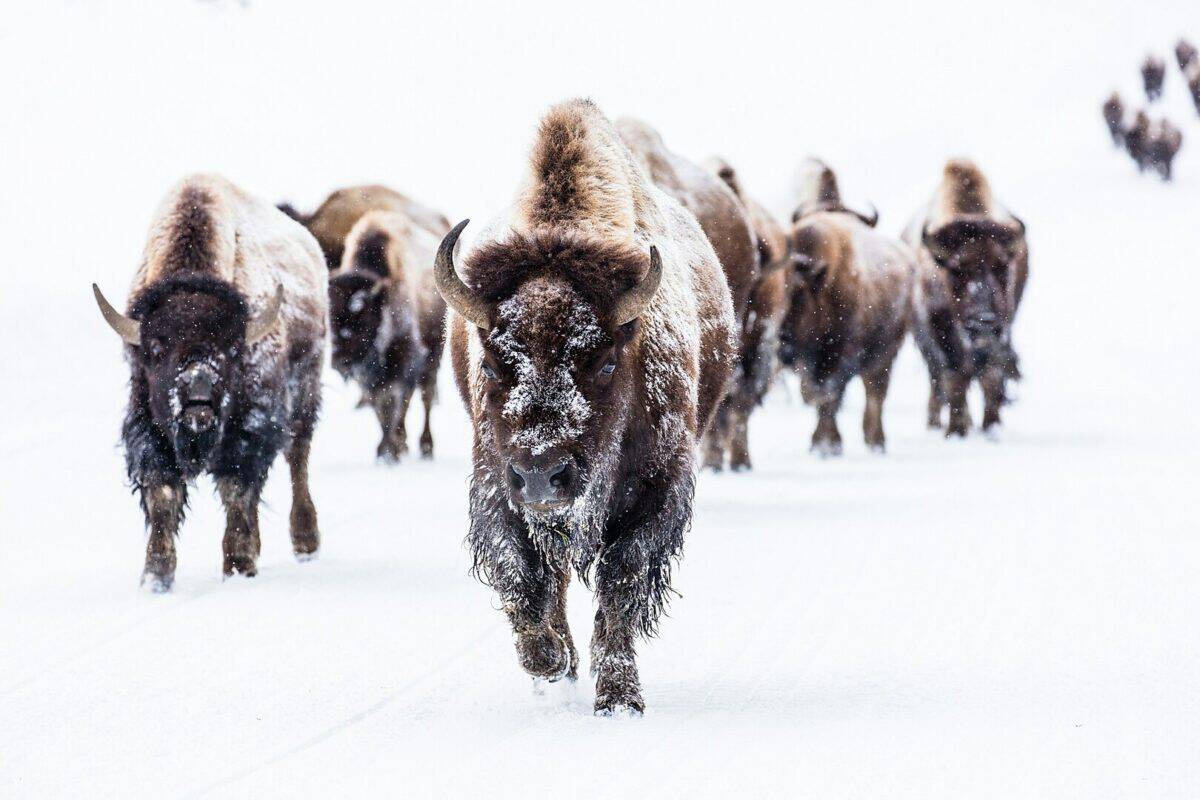
The video of the bison headbutting a car in Yellowstone National Park is a reminder of the power and unpredictability of wildlife. It is important to remember that we are visitors in their homes, and we must respect their space and not disturb them. By following the guidelines outlined above, we can help ensure the safety and well-being of humans and wildlife.
Have a look at our dedicated bison page here.
Facts About Bison

Bison are majestic creatures that have roamed the plains of North America for thousands of years. Known for their impressive size and strength, bison are a symbol of the American wilderness and play a crucial role in their ecosystem.
1. Largest Land Mammal in North America

Bison are the largest land mammals in North America, with adult males weighing up to 2,000 pounds. They can stand about 6 feet tall at the shoulder, making them formidable animals.
2. Two Distinct Species

There are two distinct species of bison: the American bison and the European bison. The American bison is found in North America, while the European bison inhabits parts of Europe and Russia.
3. Massive Herds

Historically, bison roamed in massive herds, sometimes numbering in the millions. These large groups provided protection from predators and helped shape the grassland ecosystem.
4. Speed and Agility

Despite their size, bison are incredibly fast and agile, capable of running up to 35 miles per hour. They can also jump over fences and obstacles up to 6 feet high.
5. Diet and Grazing

Bison are herbivores that primarily graze on grasses and sedges. Their grazing habits help maintain healthy grasslands by promoting plant diversity and preventing overgrowth.
6. Thick Fur Coats

Bison have thick fur coats that protect them from harsh weather conditions, including extreme cold and snow. Their fur consists of a dense undercoat and a longer, shaggy outer coat.
7. Seasonal Migrations

Bison migrate seasonally in search of food and suitable habitats. These migrations can cover vast distances, ensuring that bison populations remain healthy and sustainable.
8. Historical Significance
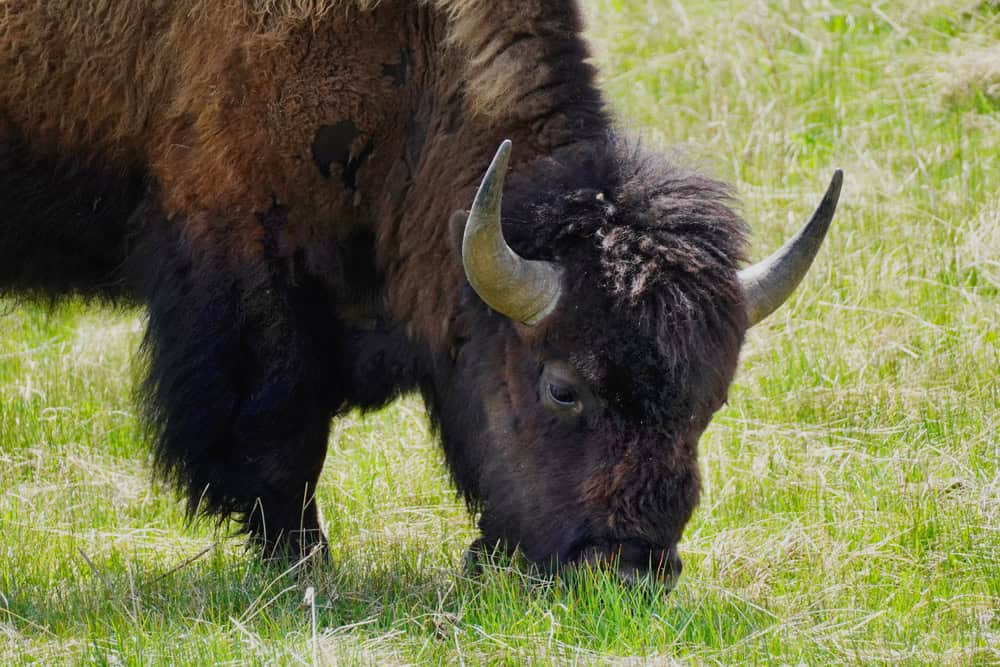
Bison were a vital resource for many Native American tribes, providing food, clothing, and tools. The bison also held spiritual and cultural significance for these communities.
9. Conservation Success

Bison populations were nearly driven to extinction in the 19th century due to overhunting and habitat loss. Conservation efforts have since helped restore their numbers, with over 500,000 bison living in North America today.
10. Social Structure

Bison live in social groups called herds, which are typically led by older females. These herds consist of females, their offspring, and young males, while older males often form separate bachelor groups.
11. Calving Season

Bison calving season occurs in the spring, typically between April and June. Female bison give birth to a single calf, which can stand and walk within a few hours of being born.
12. Wallows

Bison create depressions in the ground called wallows, where they roll to cover themselves in dust or mud. This behavior helps them shed parasites and cool off during hot weather.
13. Keystone Species

Bison are considered a keystone species, meaning their presence has a significant impact on the ecosystem. Their grazing patterns create habitats for various plant and animal species.
14. Lifespan

In the wild, bison can live up to 20 years, though the average lifespan is around 15 years. In protected environments like national parks, they often live longer due to the absence of predators and ample food supply.
15. Symbol of the American West
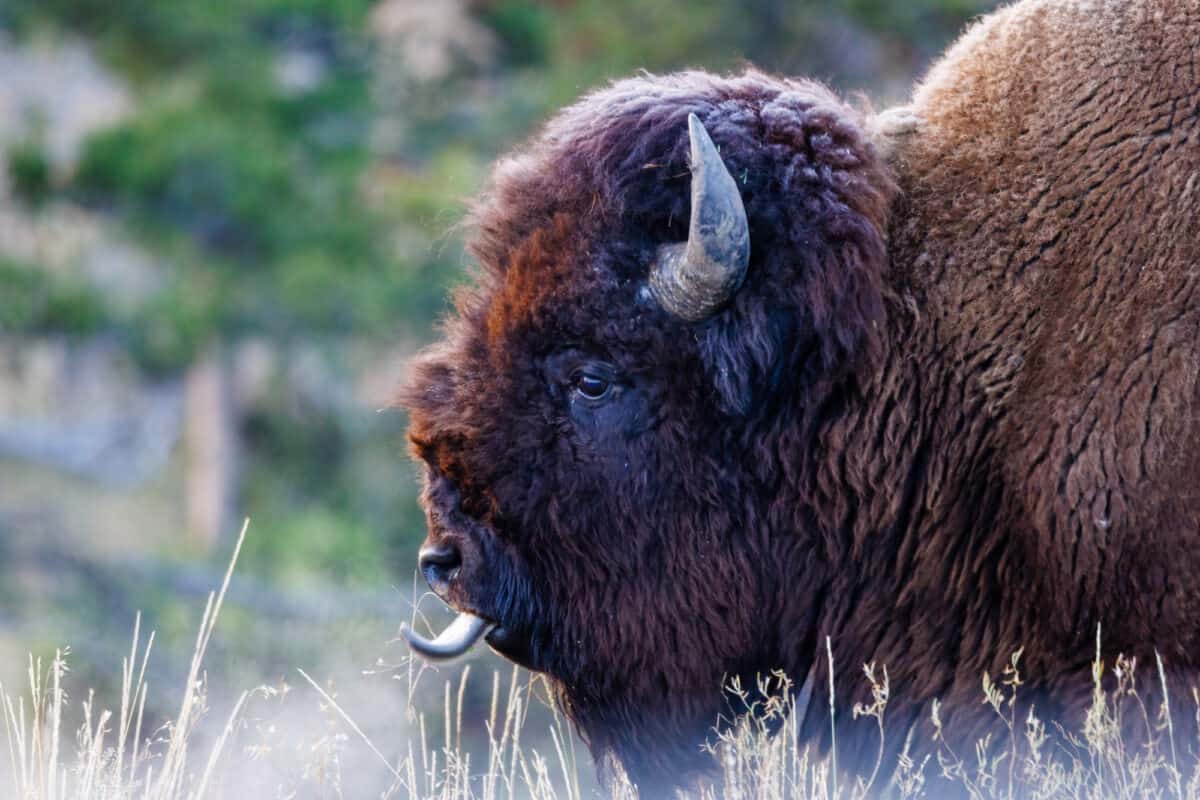
Bison are iconic symbols of the American West, representing freedom, resilience, and the natural beauty of the region. They are often featured in art, literature, and as the state mammal of several U.S. states.
Next up:
Join our Forum for free today!


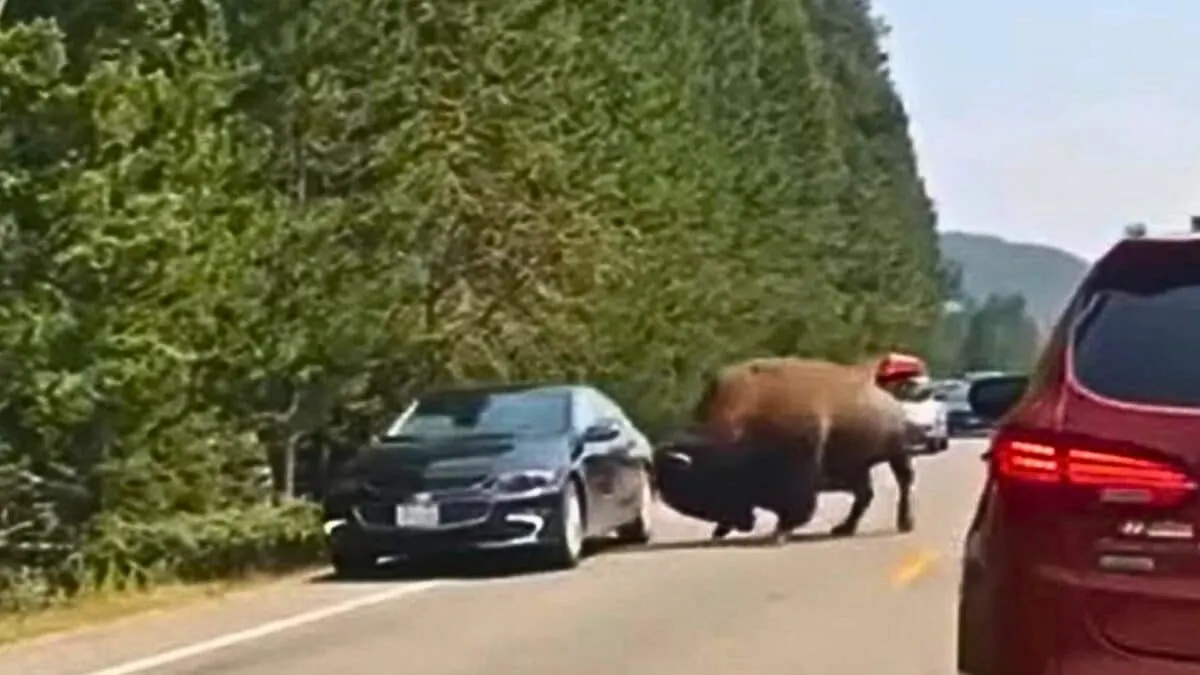

JB
Tuesday 5th of September 2023
When I see a self absorbed person (like woman in recent video) trying to take a picture with a Bison~ I get so irked I wish the bison would shift his wt,just a nudge her to knock her off her feet! Bison are not there to entertain,that is the Bison's home, just observe them. Dont get so full of yourself that you think you can get next to them, & mess with them. Who will pay when something happens? The Bison! The cost is his/her life☹️ Its time to punish the people that screw with any of the wildlife. The ramming of the car, is unfortunate but understandable. It's too bad it wasn't the "selfie" gal's car...that would be priceless😂
Nancy
Monday 4th of September 2023
Probably was headbutting their reflection
Lynda fidler
Monday 4th of September 2023
They were on a park road and stayed in their car. They did not provoke the animal. Unfortunate for them but they did nothing wrong.
Don adams
Wednesday 6th of September 2023
@Lynda fidler, you have no idea what the participants were doing in the vehicle
Havok212
Tuesday 5th of September 2023
@Susan, they were literally driving on the road, didnt ever get out of their car. How is this their fault?
Susan
Monday 4th of September 2023
@Lynda fidler, unfortunately this is their land and people don't respect them. People getting are their own faults.they don't listen to anything.
Monday 4th of September 2023
Peak rut season is the best time not to be there because this is what you deserve.